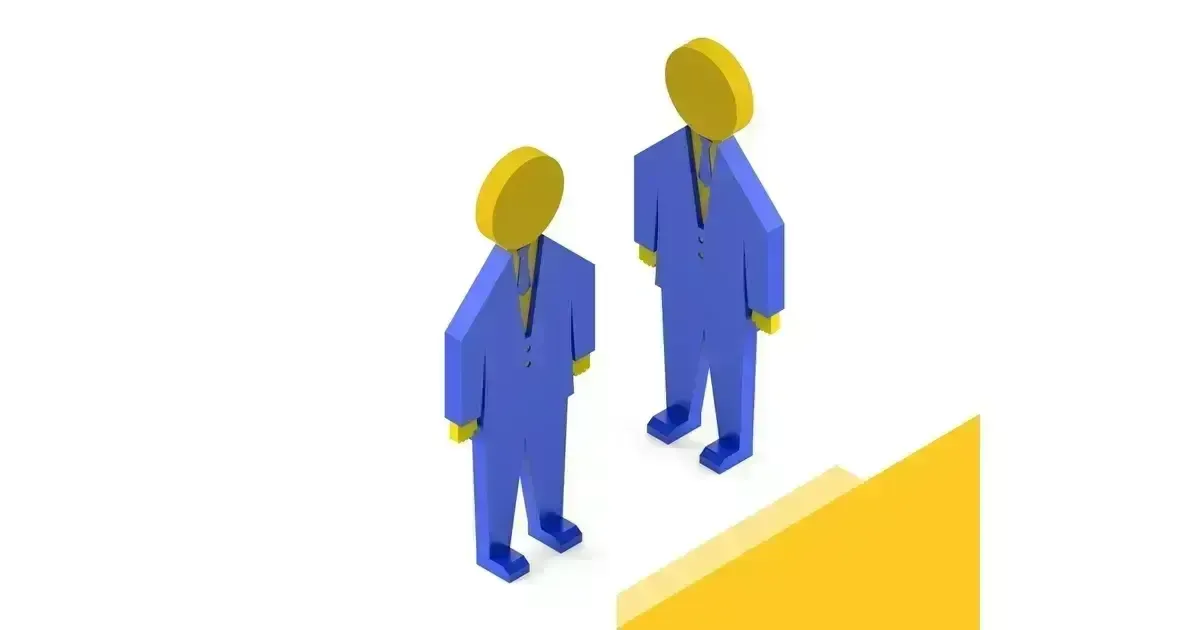Explore the intricate relationship between inequality and innovation in this insightful article. Discover how transformative solutions and collaborative efforts can bridge economic gaps, empower marginalized communities, and foster inclusive growth. Delve into successful case studies and strategies to ensure that innovation benefits all segments of society in a rapidly evolving world.
Introduction.
It would be important to address the issue of economic inequality as it threatens to destabilize any society or hinder its economic development. Also known as socioeconomic disparity, inequality is a social relations concept that can be viewed in terms of income differences and inequalities in access to education and health facilities. Thus, there is a social injustice of inequality in the contemporary world as witnessed by the increasing incidence of civil unrest coupled with stagnation in most parts of the world due to technology advancement and globalization. This hard-core fact serves to explain why there is a need to look for new strategies to close these gaps and bring in more inclusiveness to this sphere.
The process of innovation, which many people believe to be the key to higher economic growth and development, can solve these problems. Failure yields creativity, and innovation through new technologies present ways of devising more effective means through which societies can improve the availability of resources, provided the society empowers the creation of better solutions for small and vulnerable societies. Using this knowledge management building block, this article analyses how innovation is entwined with, in some cases, perpetuates and, in other cases, provided the antidote to inequalities. Identifying how change can be designed to address socio-economic inequality not only allows us to continue the advancement of the theory on ineuivalence but also provides the strategy for addressing growing inequalities in the modern world.
1. Understanding Economic Inequality.
Today, the level of inequality is just as high and diverse. The super-rich can be found both at the global and regional levels. As many researchers pointed out in recent years, the largest per cent of assets belong to the few richest men and companies, while billions of people are suffering from hunger. This inequality is not just a figure in a Brodkorb economy graph; it is a real day-to-day life of the excluded populace. These drivers have been globalization, technological change and others more, which have worked tremendously to enhance this inequality since when the skills in the labor market increased greatly, the high-skilled workers are rewarded much as compared to the low-skilled workers whose wages are dormant as well as their insecure jobs. Also, policy decisions such as taxation policies affect the costs involved in the organization that have benefited the well to do and cut down on social services, have deepened these rifts, more so pointing out the need to fix the problem.
Such inequality, if left to grow unfettered, does not only impact just the economical stratus of a society but also inflames other sectors of society such as the social and ergo the political. Inequality reduces mobility, which distorts meritocracy and erodes. Institutionalism, therefore, is high level, which can lead to it. Economic marginalisation leads to increased crime rates, poor health, and education standards and thus forms a persistent cycle of poverty from which the affected communities have a hard time breaking. These are the reasons that help to realise the fact of the systematic character of the injustice and the need to search for non-traditional ways of its elimination.
2. The Innovation Landscape.
Imnovation is a diverse phenomenon and can be defined technologically, socially, or in terms of policy and where application of all forms can change the fundamentals of an economy. Human capital development opening up new frontiers through technological improvement in areas like artificial intelligence, biotechnology, and renewable energy sources can be a sure way to boost productivity, hence economic growth. But it also carries the danger of aggravating existing disparities if only the higher classes of the population have access to these innovations. Social innovations, that is, activities targeted at solving social problems can be innovative in the process of making social innovation: initiatives that are designed to meet the needs of communities with limited access to resources and opportunities. Therefore, policy innovation is equally important as it provides the framework for addressing the distribution of the gains that are likely to accrue from technology in a manner that will provide socially inclusive growth.
At the same time, having innovative economies means skills can boost growth and living standards as well as worsen competition if left to run wild. On the same note, the digital division is a compelling indication that people who do not have a device or can nothing manoeuvre around the computer are left behind as more businesses, organizations, and everything goes digital. Typically, industries transform, and anyone who can not meet the need after transformation, due to lack of skills or capital, will be pulled back, thus creating the gap between the ‘haves’ and the ‘have nots’. For that reason, the two-fold nature of the innovation has to be a significant focus when it comes to dealing with the issue of inequality in a concerted manner so that it is not instrumentalized for the purpose of marginalization.
3. Case Studies of Successful Innovations Addressing Inequality.
Analysis of particular cases shows that using specific approaches to create innovations in solving socioeconomic problems can indeed achieve their narrowing and thus promote the inclusion of those who are in need of such assistance. A good example of such innovation is micro financing, which finances individuals who are locked out of traditional financial institutions. Through the provision of small amounts of credit and educativeFeature microfinance organizations give people the opportunity to start income-generating activities, finance the education, and generally enhance their standard of living. This model has many successes in countries such as Bangladesh, in which it has taken millions out of poverty and promoted the business among women as they are the most vulnerable to the economic difficulties. Of course, such innovations solve more urgent problems committing to the long-term transformation of the population’s quality of life, increasing the level of individuals’ and community’s self-sufficiency.
Further, digital platforms have come out strongly as revolutionary means of providing economic divides. Efforts that use technology to offer education, health, and employment to the needy are touching the lives of vulnerable persons. For instance, online education has made it possible for individuals who would otherwise not be financially able to acquire knowledge and skills that would make them employable in good organizations to do so cheaply. The initiatives that are pushed into the society as inclusive innovation pertain to education, especially STEM, funding of technology companies, especially in regions that information technology has not fully spread to increase the impact of these innovations. Thus, by analysis of successful cases it is possible to develop the measures which, on the one hand, encourage the innovative actions but, on the other hand, guaranteed their utilization by segments of the population which is most needed.
4. The Role of the Public and the Private Sector.
There is the reason why the government and private actors work together closely to encourage the formation of environments that are inclusive of innovation. There are certain policies at the governmental level that shall be implemented to first prioritize research and development and second to subsidize application and third to support build up of infrastructure. In failing to create policies that will foster a culture of cooperation between the startups, educational institutions, and large corporations, governments can foster creativity and undertake to solve social problems. For example, some of the strategies that can be established are optimizing public private partnership based on some need in the community which they have identified as most appropriate to address, so as to enhance the social equity measures.
The private sector also has large roles in minimizing or perhaps eradicating these economic divides through CSR obligation. Because ethical practices do not always rule out equal remuneration for equal work or against employing children, firms can help to reduce economic exclusion. In addition, companies that prop up job opportunities, skills development, and engage in sustainable procurement in local communities can positively impact those who remain economically left out. Being inclusive is innovative is not only effective in improving organizational image but also increases the ways of creating sustainable revenue base through creating new markets for goods and services produced. Thus, the cooperation between the public and the private sectors is fundamental to utilizing innovation as a strategy to unleash economic gaps as well as support sustainable development.
5. Challenges and Barriers to Bridging Economic Gaps.
Despite the usage of innovation being able to open the gap of economic difference, there are still many challenges and obstacles there. Education, information technology, and infrastructure, however, is limited with most affected areas still in the rural and underserved urban centres. Members of socio-economically disadvantaged groups are at a disadvantage when it comes to applying and benefits from emerging products. The digital divide captures this difficulty, a problem in which individuals can not equally access or effectively use computers and the Internet. If there are no attempts to eliminate such barriers, minorities will remain in the same position – at the bottom of the innovations scale.
However, there is a risk that the innovation will result only in increasing existing disparities unless there are adequate policies in force. This makes technology growth bypass the regulatory webs that govern its path, rendering some situations where innovation excites offer more boosts to the powerful as they already sit in boxes of influence. Such can also be a cause of increased social cleavages and development of resentment from lagging groups or communities. To overcome these challenges, a good starting point is therefore the principle Poratisation and the proactive defense of policy intervention for the purpose of Inclusive innovation for meaning full participation irrespective of the segment of the population one originates from. When these barriers are resolved, stakeholders are likely to design an effective innovation system that will help to transform communities rather than continuing with the production of similar products, which have negative consequences in society.
Conclusion.
However, inequality and innovation are two paradoxical processes and complexes that indicate the possibilities for creating an equitable future and achievements that contain threats to future development. This paper examines how innovation can work for economic disparities in favour of the growth of the disadvantaged groups in society and the promotion of more diversification during a world that is changing successively. But unleashing this potential needs collective action of policy makers, companies, and civil society organizations to build the requisite conditions to promote equity and inclusion in innovations. From the analysis above, it is clear that good case studies that seek to apply innovation actually show that when innovation is done right, it can bring improved solutions that positively impact society on the large.
One has to hope that as we progress in the future, he or she will continue to pay particular attention to the social injustice that is an existing aspect of society and the fact that innovation should be inclusive. All the identified barriers will dictate the manner in which stakeholders will have to collaborate and progress in the creation of an inclusive innovation ecosystem. This call for equity, changing policies, and adopting culture reveals that innovation can become the force behind narrowing gaps, strengthening society’s fabric, and fuelling economic growth for a positive economy for all.


























